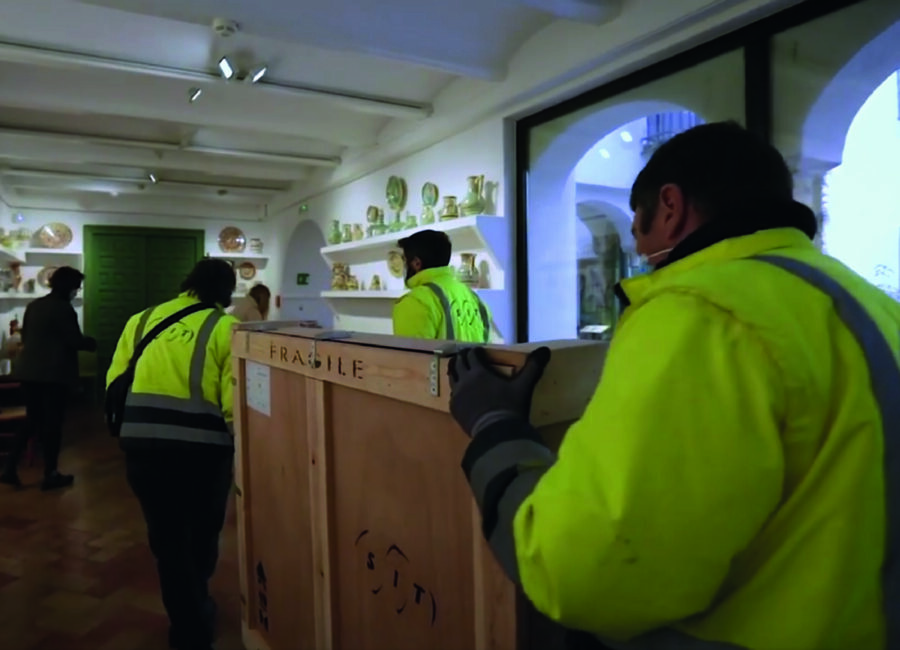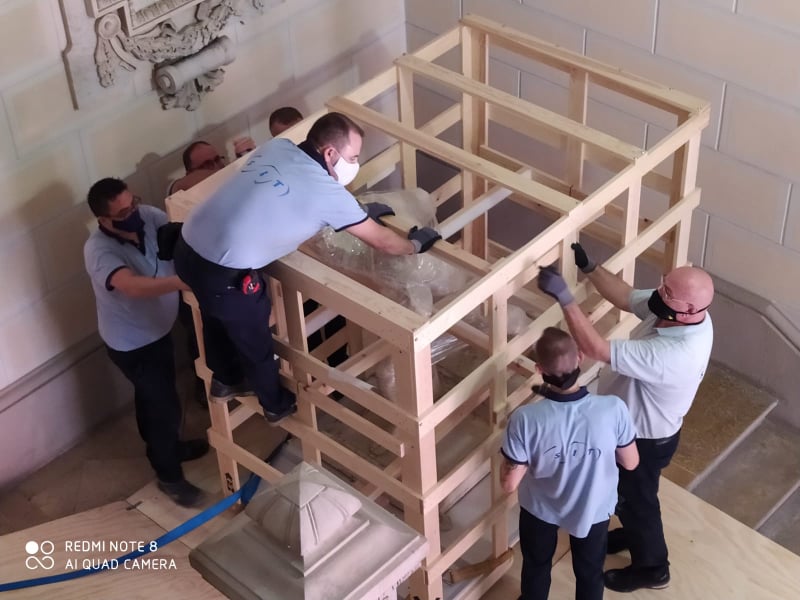
As it is well known, fine art collectors will always go that extra mile to get their hands on a particular piece they covet. No matter the price or time, they will pursue it until it’s theirs. Whether to have it proudly hung on a wall and set as a centerpiece for everyone to admire or to keep it hidden from the public’s prying eyes and jealously appreciated in peace and quiet. It will be their pride and joy and a special kind of accomplishment only known to them. But what happens when such a prized art possession needs moving? What type of insurance and security should one have in order for that undertaking to go as smoothly and securely as possible? Here is all you need to know about fine art moving insurance.
Prepare your art for the relocation
No move is easy. Whether moving a piece of furniture, office equipment, or even a whole apartment, you will face many situation-specific challenges during the relocation process. However, when it comes to fine art moving, circumstances demand a completely different level of organization. Firstly, you will most likely be handling a one-of-a-kind, very expensive piece of décor. Secondly, depending on the type of art piece you will be moving, certain conditions regarding its handling and care will need to be met. It is crucial to find an expert company in such a field that you can trust to perform that task efficiently and meticulously.
Get an appraisal for the art you will be insuring and moving
It is a common misconception that a default moving policy can adequately insure your art. Quite the opposite, actually. If you got a regular policy for the piece of art you are moving, and something happened to it during the move. The regular moving insurance policy wouldn’t be of much help. It would only get you reimbursed for the value of the weight of the item which got damaged. A priceless vase would be valued and covered by the same amount of money as a generic kitchen toaster of the same weight.
This is why you need to have your artwork evaluated, even more so if you’re moving other things alongside it. If that is the case, your artwork will need a separate insurance policy. Also, take into account that the higher your artwork’s value, the costlier it will be to have it insured.

Though you might have gotten your artwork appraised a long time ago and checked the box for having that document already, you need to know that the appraisal is only a temporary valuation—it’s not permanent. Depending on your art piece and what you do with it, you will need to have it re-appraised at least every three to five years. This is because sometimes art or fashion and trends fluctuate in value without you even being aware of that. Who knows, maybe by being diligent when it comes to appraising your artwork, you will find out that the piece you regarded as moderately pricey tripled in value since the last valuation. This is why aside from taking care of how your artwork is packed, handled, and transported, you must also have its most recent value in your insurance policy.
Having your fine art insured
Though you did the first step and got your art piece appraised, it isn’t insured yet. To do that, you will need a special type of broker who is specialized in fine art insurance. The difference between him and a regular insurance broker is that he will not be looking at your art piece as yet another insured item out of the bunch. He will approach it with expertise and knowledge beyond the mere insurance chart values. With your help, he will be able to determine how much that piece means to you and also how much its objective value is. Together you can make a bespoke insurance policy exactly right for the safe moving of your fine art.
The documentation you will need for the fine art moving insurance

Alongside everything mentioned, you need to have some paperwork proving that you are indeed the owner of the item in question. And also some proof to attest to the artwork’s value and authenticity. Depending on the insurance company, here are some examples of what you might need:
- The provenance of the artwork in question
- Bill of sale
- Proof of ownership
- Possibly photographs of the artwork (if relevant for the specific case)
- The most recent appraisal of the item
It’s up to the insurance company to decide what they will be asking for.
Handling during the move
Even when moving pillows, you try not to get them dirty or rip them up. Well, artwork pieces are extremely more fragile than pillows and not to mention much more valuable. Special care is crucial when handling and moving artwork. Here are some things you should consider when relocating your prized possessions:
- What are the materials, dimensions, and how fragile is it?
- Is there a need for special temperature conditioning during the transport and/or immediately after it?
- How will you be packaging and securing them during transport?
- Will their relocation be somewhere close, or are you shipping them far away?
You will need to address all those questions in order to plan your fine art move.

Insurance Claim for your fine art
Though it was the last thing anyone wanted to happen, it did. The good thing is you were cautious enough to ensure your artwork beforehand, and now, you will be compensated for your material and quite possibly very sentimental loss. It will not be enough to make up for the damage done, but it will give you some satisfaction knowing that you did all that you could not end up empty-handed if something misfortunate happens. Just keep in mind that the majority of the fine art moving insurance claims are due to robbery, theft, and art getting damaged during the transit. With that in mind choosing who you trust with moving your art and who you choose for its insurance is crucial.